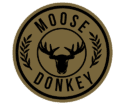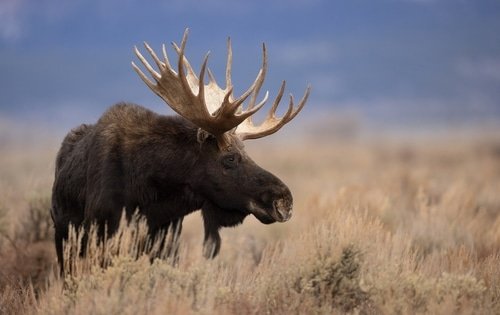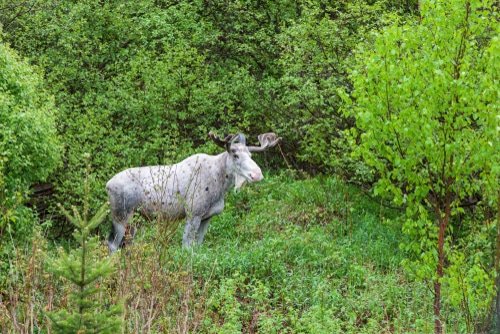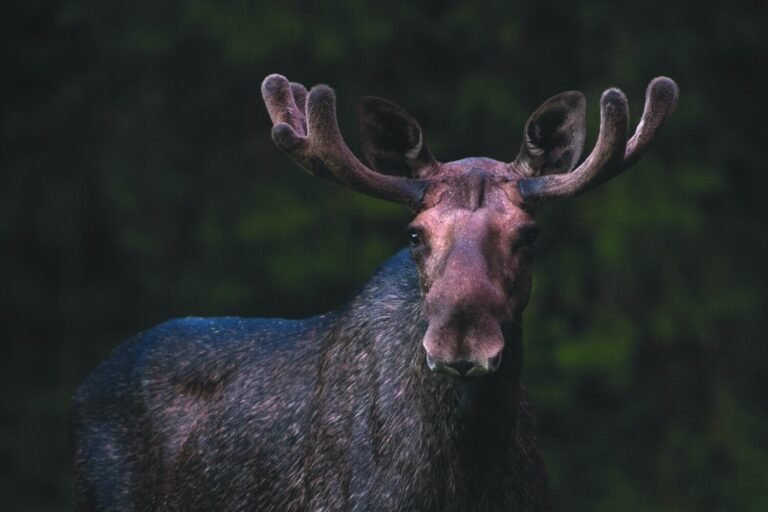Picture this: you’re driving down a quiet country road, enjoying the picturesque scenery, when suddenly, out of nowhere, a massive moose appears in your path. You slam on the brakes, but it’s too late. You collide with the majestic creature, causing extensive damage to your vehicle and risking your safety. Welcome to the world of moose car collisions.
Definition of a Moose Car Collision: When a vehicle collides with a moose on the road.
A moose car collision occurs when a vehicle and one of these magnificent creatures cross paths on the road with unfortunate consequences. These collisions are more common than you might think, especially in areas where moose populations thrive, and their habitats intersect with human settlements and transportation networks.
Importance of Understanding Moose Car Collisions: Impacts on human safety, wildlife conservation, and property damage.
The significance of comprehending moose car collisions cannot be understated. First and foremost is the matter of human safety.
The sheer size and weight disparity between vehicles and moose make these accidents incredibly dangerous for drivers and passengers. Collisions can result in severe injuries or even fatalities due to the immense force involved.
Furthermore, understanding these collisions is crucial for wildlife conservation efforts. Moose populations must be properly managed to ensure their sustainability while minimizing risks to motorists.
By studying the patterns and causes of these accidents, experts can develop strategies that protect both humans and these extraordinary animals. Last is property damage—vehicles involved in moose car collisions often sustain significant harm.
The impact can crush windshields, dent roofs, shatter headlights, or worse. Repairs can be costly for individuals and burden insurance companies covering such incidents.
Stay tuned as we delve further into the world of moose car collisions, exploring the causes, risks, and preventive measures. It’s time to prioritize road safety with moose and learn to avoid these highly challenging encounters.
Description of Moose
The Majestic Giants of the Deer Family
When it comes to size, moose reign supreme in the deer family. These magnificent creatures are truly colossal, standing tall as the largest species among their relatives.
Their muscular build and impressive antlers demand attention and respect from anyone fortunate enough to witness their presence. Adult male moose, also known as bulls, can reach towering heights of up to 7 feet at the shoulder and weigh an astonishing 1,500 pounds!
The antlers adorning their heads are nothing short of awe-inspiring; these bony appendages can span a remarkable width of up to six feet across. Females, called cows, are slightly smaller but still formidable in size.
Habitat and Behavior
Where Moose Roam and How They Behave
Moose are fond of forested areas near lakes, rivers, or marshes. These habitats provide fresh vegetation for grazing and serve as convenient sources of hydration. It’s common to spot a moose wading gracefully through shallow waters while munching on aquatic plants with gusto.
When timing their activities, moose prefer the twilight hours—dawn and dusk—when visibility is dimmer and they feel more secure venturing out from cover. During these active periods, you might find a moose browsing on leaves or twigs with its elongated snout, searching for delectable bites amongst the dense foliage.
Their diet mainly consists of woody vegetation such as willows and birch trees but also includes aquatic plants during those serene lakeside moments! It’s important to remember that while they may seem docile in nature documentaries or picturesque postcards showing them peacefully nuzzling mossy greens, moose possess an innate strength that commands caution when encountered on the road.
By familiarizing ourselves with moose’s description, habitat, and behavior, we can better appreciate their grandeur and understand why they are such a prominent figure in discussions about road safety. Avoiding moose accidents begins with this knowledge, allowing us to navigate their territories respectfully and carefully.
Causes of Moose Car Collisions
Seasonal Factors: Breeding Season (Rut)
Subtitle: The Time When Moose Go Wild One of the key reasons moose car collisions occur is during the breeding season, also known as the rut.
This time of year, which typically falls in the autumn, sees a surge in moose activity and aggression. Male moose, known as bulls, are on a quest to find a mate and establish dominance over other males.
During this period, they become more unpredictable and tend to wander onto roadways in search of potential partners or to defend their territory from competing suitors. Drivers must exercise caution during this time and know that moose may be more inclined to dart across roads unexpectedly.
As their hormones surge, their focus may be solely on pursuing love rather than road safety with humans. So, if you’re out driving in moose territory during fall, keep your eyes peeled for these majestic creatures looking for love.
Seasonal Factors: Migration Patterns
Subtitle: When Moose Take to the Roads Migration is not just reserved for birds; even moose have their seasonal movements.
These gentle giants tend to embark on long-distance journeys as seasons change or resources become scarce in their current habitat. These migrations increase the likelihood of encountering them on roads.
Moose often migrate from higher elevations, where they spend summers grazing on lush vegetation, down towards lower-lying areas where food is still abundant during winter. Unfortunately for humans sharing the roads with them, many migration routes intersect with highways and major thoroughfares.
So next time you drive through one of these migration corridors—watch out! Watch signs indicating potential wildlife crossings and adhere to suggested speed limits designed to minimize unfortunate run-ins with our antlered friends.
Environmental Factors: Road Design and Location
Subtitle: Where Moose Meet the Roads The design and location of roads play a significant role in the frequency of moose car collisions.
Roadways near moose habitats or passing through their traditional ranges naturally increase the chances of encounters between vehicles and these magnificent creatures. Moose prefer forested areas close to water bodies, making certain roads particularly prone to collisions.
For example, highways flanked by dense thickets or adjacent to marshy areas appeal to moose because they prefer abundant food sources and cover. The proximity between roads and moose habitats heightens the risk of unexpected encounters, posing a challenge to road safety.
Some regions have implemented measures such as erecting wildlife fencing along stretches known for high moose activity to minimize the potential for accidents. These barriers deter moose from entering roadways or guide them toward designated crossing points where they can safely traverse without disrupting traffic flow.
Environmental Factors: Vegetation Along Roadsides
Subtitle: The Temptation That Draws Moose Another factor contributing to increased moose car collisions is the presence of vegetation along roadsides. While it may seem harmless, lush foliage adjacent to roadways is a tempting buffet for hungry moose passing by.
Moose are herbivores with an insatiable appetite for willow, birch, and other abundant woody shrubs along roadsides. As they munch on these delectable treats, their attention may stray onto passing vehicles—especially if startled or spooked by sudden noises or bright headlights—leading them into harm’s way.
Efforts are being made in certain areas to reduce enticing roadside vegetation by implementing regular trimming or installing physical barriers like gravel beds that discourage plants from taking root near roadway edges. These measures aim to divert hungry moose away from roads and decrease the risk of accidents.
Remember, while the sight of moose grazing peacefully by the roadside may seem enchanting, it’s crucial to maintain a safe distance and keep your eyes on the road ahead. After all, avoiding moose accidents is in everyone’s best interest—both for human safety and preserving these magnificent creatures in our natural world.
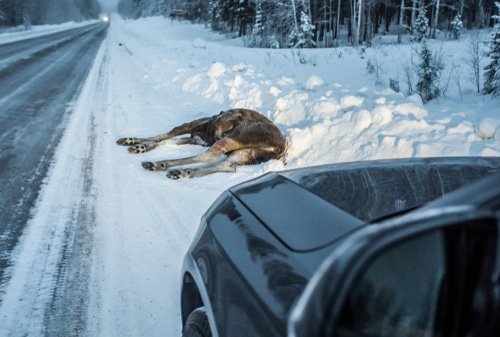
Human Safety Concerns
Vehicle Damage
The damage inflicted on vehicles can be downright devastating when it comes to moose car collisions. These majestic creatures stand tall, with their impressive height posing a serious threat to your beloved ride. During these unfortunate encounters, windshields, roofs, and engines are all vulnerable targets.
Imagine the sheer force of impact when a heavy moose collides with your car. No wonder those involved in moose car collisions often have to deal with costly repairs or total write-offs.
Impact on Cars
The height advantage of a moose means that its body is perfectly aligned with vulnerable parts of your vehicle, such as windshields and roofs. A collision can result in shattered glass and crushed metal as the immense mass of the moose comes crashing down upon your car.
Engines also suffer tremendous damage if a moose ends up in the wrong place at the wrong time. The monetary cost of repairing these damages can add up quickly, leaving you stranded without wheels and facing hefty repair bills.
Airbag Deployment Risks
Airbags are designed to protect passengers during accidents by deploying rapidly upon impact. However, when it comes to encounters with towering moose, these safety features may not function as intended.
The size and weight of a full-grown moose can inadvertently trigger airbags prematurely or unexpectedly – sometimes when their deployment may not be necessary or helpful. This adds a layer of complexity and potential danger in situations where road safety with moose is compromised.
Injury Risks
In addition to vehicle damage, one must never overlook the potential for severe injuries resulting from collisions between cars and these colossal creatures roaming our roads. The sheer size disparity between vehicles and moose poses an alarming risk to human life when accidents occur.
Collision Impact on Passengers
Colliding with a moose is a forceful impact that can lead to severe injuries for passengers in the vehicle. The size and weight of a moose can easily overpower the protective measures built into cars.
Occupants may suffer from broken bones, internal injuries, or traumatic head and spinal cord injuries due to the sheer force of the collision. These injuries can have long-lasting physical and emotional consequences, reminding us of the importance of avoiding moose accidents at all costs.
Ejection from Vehicles
The violent nature of moose car collisions dramatically increases the risk of passengers being thrown out of their vehicles upon impact. The sudden jolt caused by hitting such a massive animal may result in doors being forced open or windows shattering, potentially leading to occupants being ejected from the vehicle entirely.
This horrifying scenario exposes individuals to further injury and increases their vulnerability to secondary impacts from other vehicles or objects on or near the road. Recognizing and addressing these human safety concerns associated with moose car collisions is crucial as we strive towards safer roads for all.
Wildlife Conservation Efforts
Moose Population Management
Moose population management is a crucial aspect of wildlife conservation efforts. To ensure the sustainability of moose populations, various strategies are implemented. One important approach is focused on maintaining sustainable population levels.
This involves monitoring moose populations through surveys and research to assess their numbers and distribution across habitats. Conservationists can determine appropriate measures to prevent overpopulation or decline by understanding the population dynamics.
Hunting Regulations For Population Control
Hunting regulations play a significant role in controlling moose population growth. These regulations are carefully designed to balance conservation and providing hunting opportunities for enthusiasts.
By implementing hunting seasons, bag limits, and licenses, authorities can manage the number of moose harvested yearly. This ensures that the population remains stable while allowing responsible hunting practices.
Conclusion
Moose car collisions pose significant risks to human safety and can result in extensive vehicle damage. However, by understanding the causes of these accidents and implementing effective wildlife conservation efforts, we can work towards minimizing such incidents in the future. Conservation measures like maintaining sustainable population levels and regulating hunting help balance preserving wildlife populations and road safety with moose.
By raising awareness about moose behavior patterns among motorists through public education campaigns and improving road infrastructure near known moose habitats, we can further contribute to avoiding moose accidents on our roads. Together, we can create a safer environment for humans and majestic creatures like the mighty moose.
